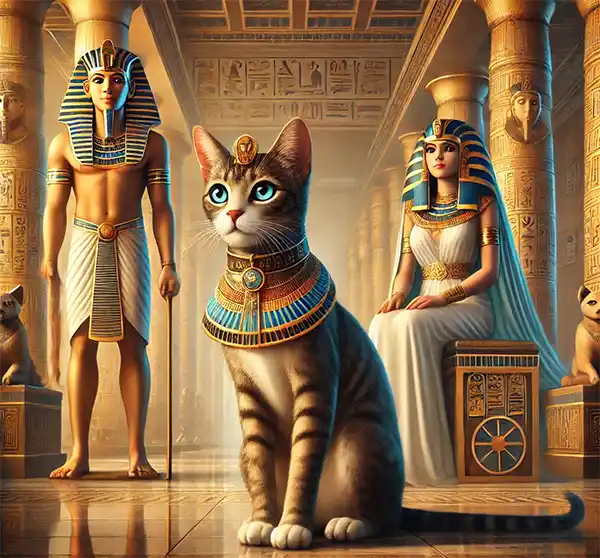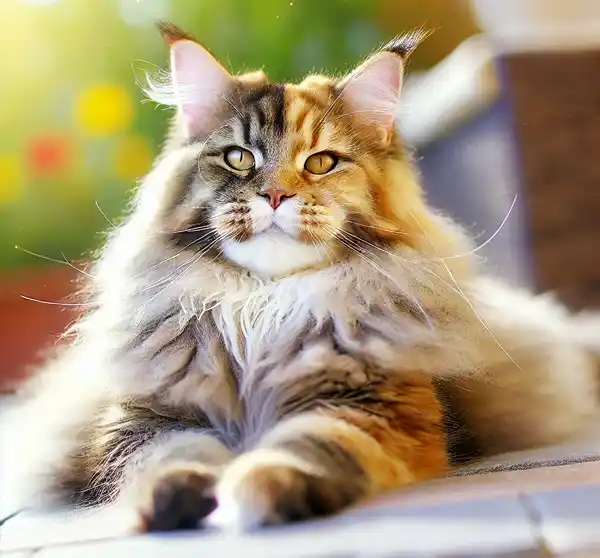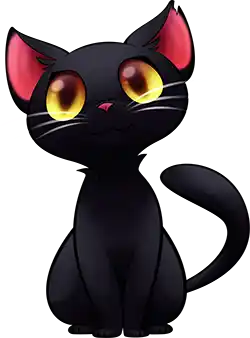Celebrating Our Feline Overlords
Every August 8th, cat lovers across the globe celebrate International Cat Day. This purr-fectly delightful day honors our feline companions, those mysterious and whimsical creatures that have enchanted humans for thousands of years. Whether you're a cat owner, a cat admirer, or simply a person who enjoys a good cat meme, International Cat Day is the perfect time to indulge in all things cat.
A Brief History of Cats
Cats have a fascinating and multifaceted history that stretches back thousands of years. Their journey from wild animals to beloved household pets demonstrates their adaptability and the unique bond they share with humans.
 In ancient Egypt, cats were more than just pets; they were revered as divine creatures. The Egyptians valued cats for their ability to control pests like mice and rats, which threatened food supplies. Cats' hunting prowess earned them a place in Egyptian homes and granaries, where they were protected and even worshipped. The punishment for killing a cat, even accidentally, was often severe, reflecting their sacred status. Cats were also mummified and buried with their owners, ensuring they could continue to protect and provide companionship in the afterlife.
In ancient Egypt, cats were more than just pets; they were revered as divine creatures. The Egyptians valued cats for their ability to control pests like mice and rats, which threatened food supplies. Cats' hunting prowess earned them a place in Egyptian homes and granaries, where they were protected and even worshipped. The punishment for killing a cat, even accidentally, was often severe, reflecting their sacred status. Cats were also mummified and buried with their owners, ensuring they could continue to protect and provide companionship in the afterlife.
As trade routes expanded, cats spread from Egypt to other parts of the world. They traveled on ships, keeping the vessels free of vermin. This not only made them indispensable to sailors but also facilitated their global distribution. By the time the Roman Empire rose to power, cats were well-established throughout Europe. The Romans, like the Egyptians, appreciated cats for their hunting abilities and often kept them as household companions.
During the Middle Ages in Europe, cats experienced a tumultuous period. They were both cherished for their utility in controlling pests and feared due to superstitions linking them to witchcraft and evil spirits. This duality is vividly illustrated by the fluctuating attitudes toward cats during events like the Black Death. While some communities blamed cats for the plague, leading to widespread culling, others recognized that reducing the cat population actually worsened the situation by allowing rat populations, and thus the spread of the plague, to increase.
The Renaissance brought a shift in perception. Cats began to be appreciated more for their elegance and companionship. They appeared in artwork, literature, and even in the homes of the elite. This era marked the beginning of a more affectionate relationship between humans and cats, one that emphasized their companionship over their utility.
In Asia, particularly in Japan and China, cats have long been revered. Japanese culture, for instance, celebrates the "maneki-neko," or beckoning cat, believed to bring good luck and fortune. Cats are often featured in Japanese folklore and art, embodying both supernatural elements and everyday charm. In China, cats were historically valued for their role in protecting silkworms from rodents, making them integral to the silk production industry.
The 19th and 20th centuries saw cats becoming increasingly popular as pets in the Western world. The advent of cat shows in the late 1800s highlighted their beauty and variety, leading to the breeding of various cat breeds we know today. Publications like "Old Possum's Book of Practical Cats" by T.S. Eliot, and the subsequent musical "Cats," further cemented their place in modern culture.
The rise of the internet in the late 20th and early 21st centuries brought about a new era for cats. With the advent of social media, cats found a new platform to charm and entertain millions. Viral cat videos, memes, and social media accounts dedicated to feline antics have made cats global superstars, demonstrating their timeless appeal and the deep affection humans have for them.
From their ancient origins as revered deities to their modern status as internet icons, cats have woven themselves into the fabric of human history and culture. Their adaptability, charm, and mysterious nature ensure that they will continue to captivate and enchant us for generations to come.
The Feline Mystique
What makes cats so captivating? It could be their aloof demeanor, their unpredictable behavior, or their uncanny ability to find the coziest spot in any room. Cats are a study in contradictions: fiercely independent yet capable of deep affection, playful and lazy, elegant yet capable of the most undignified antics.
Their mysterious nature has inspired countless works of literature, art, and cinema. From the Cheshire Cat in "Alice in Wonderland" to the enigmatic Mr. Mistoffelees in "Cats," felines have always held a special place in our cultural imagination.
Cat Quirks and Fun Facts
- Whisker Power: Cats' whiskers are highly sensitive and can detect changes in their surroundings, helping them navigate tight spaces. These specialized hairs, known as vibrissae, are essential tools for a cat’s sensory perception.
- Nine Lives: The myth that cats have nine lives likely stems from their remarkable agility and ability to escape dangerous situations. However, a cat with nine lives is probably just as likely to get stuck in a tree nine times.
- Purring Mystery: While we often think cats purr because they're content, they also purr when they're frightened, in pain, or even when they're healing. This multi-purpose vibration is one of nature’s most soothing sounds.
- Night Vision: Cats can see in much lower light levels than humans. This adaptation makes them excellent hunters and stealthy night-time prowlers, perfect for those midnight zoomies.
- Tail Talk: A cat's tail is a language all its own. A twitching tail can indicate excitement or irritation, while a puffed-up tail shows fear or aggression. If your cat’s tail is straight up with a slight curve at the end, consider yourself in their good graces.
 Cats in Pop Culture
Cats in Pop Culture
Cats have left their paw prints all over pop culture, becoming iconic figures in literature, film, and the digital world. Here are some standout examples:
- Garfield: This lasagna-loving, Monday-hating cat created by Jim Davis has been a staple of comic strips since 1978. Garfield's sarcastic humor and lazy demeanor have endeared him to millions, leading to TV shows, movies, and a massive merchandising empire.
- Grumpy Cat: Real name Tardar Sauce, this internet celebrity became famous for her perpetual frown. Grumpy Cat's sour expression launched a thousand memes and brought joy to millions. Her rise to fame included books, a movie, and even a wax figure at Madame Tussauds.
- The Cheshire Cat: From Lewis Carroll's "Alice's Adventures in Wonderland," the Cheshire Cat is known for his enigmatic grin and ability to disappear and reappear at will. This character has fascinated readers and viewers alike, featuring in numerous adaptations of Carroll's classic tale.
- Hello Kitty: Created by the Japanese company Sanrio, Hello Kitty is a global phenomenon. This cute, mouthless cat has adorned everything from school supplies to clothing and accessories since her debut in 1974. Hello Kitty's impact on pop culture is immense, with her image instantly recognizable worldwide.
- Tom and Jerry: This iconic duo has been entertaining audiences since 1940. Tom, the mischievous cat, and Jerry, the clever mouse, have engaged in endless chases and slapstick humor. Their antics have transcended generations, making them timeless figures in animation.
- Salem Saberhagen: From the TV series "Sabrina the Teenage Witch," Salem is a former witch sentenced to spend 100 years as a cat. Known for his wisecracks and schemes, Salem adds a delightful layer of humor to the show and has become a beloved character in his own right.
- The Aristocats: This classic Disney film from 1970 follows the adventures of Duchess and her three kittens, who must find their way back home after being kidnapped. Along the way, they encounter various colorful characters, including the suave Thomas O'Malley. The movie's charming storyline and catchy songs have made it a favorite for cat lovers.
- Puss in Boots: Originating from the "Shrek" franchise, this swashbuckling feline voiced by Antonio Banderas quickly became a fan favorite. Puss's dashing persona and signature big, pleading eyes have led to a spin-off movie and further solidified his place in pop culture.
- Nyan Cat: This pixelated, rainbow-trailing cat became an internet sensation in 2011. The animation, set to a catchy tune, became a viral phenomenon, representing the quirky and creative spirit of internet culture.
- Simon's Cat: Created by Simon Tofield, this animated series captures the everyday antics of a mischievous cat and his long-suffering owner. The humor and relatability of Simon's Cat have made it a hit on YouTube and beyond, spawning books and merchandise.
From comic strips to blockbuster movies, cats have become integral parts of our entertainment landscape. Their unique personalities and endearing quirks make them perfect subjects for storytelling, ensuring their presence in pop culture will continue for years to come.
Celebrating International Cat Day
How can you celebrate this pawsome day? Here are a few ideas:
 Spoil Your Cat: Treat your feline friend to some extra-special treats or a new toy. Maybe invest in that luxury cat tree they've been eyeing (or ignoring).
Spoil Your Cat: Treat your feline friend to some extra-special treats or a new toy. Maybe invest in that luxury cat tree they've been eyeing (or ignoring).- Adopt a Cat: If you're ready for a new furry companion, consider adopting from a shelter. There are countless cats in need of loving homes.
- Donate: Support local animal shelters and cat rescue organizations. Your contributions can help provide food, medical care, and shelter for cats in need.
- Cat Art: Get creative and draw or paint a picture of your cat. Not an artist? No problem! Your cat will appreciate your effort, even if they don’t show it.
- Cat Nap: Take a cue from your cat and enjoy a leisurely nap. After all, cats spend about 70% of their lives sleeping.
International Cat Day is a wonderful opportunity to celebrate the unique bond between humans and cats. Whether they’re curling up in our laps, knocking items off our shelves, or simply gazing at us with those mysterious eyes, cats have a special way of making our lives richer and more interesting. So, let's raise a glass of catnip tea (or something stronger) to our feline friends and thank them for being their quirky, charming, and ever-entertaining selves. Happy International Cat Day!
Please Share our Content






 In ancient Egypt, cats were more than just pets; they were revered as divine creatures. The Egyptians valued cats for their ability to control pests like mice and rats, which threatened food supplies. Cats' hunting prowess earned them a place in Egyptian homes and granaries, where they were protected and even worshipped. The punishment for killing a cat, even accidentally, was often severe, reflecting their sacred status. Cats were also mummified and buried with their owners, ensuring they could continue to protect and provide companionship in the afterlife.
In ancient Egypt, cats were more than just pets; they were revered as divine creatures. The Egyptians valued cats for their ability to control pests like mice and rats, which threatened food supplies. Cats' hunting prowess earned them a place in Egyptian homes and granaries, where they were protected and even worshipped. The punishment for killing a cat, even accidentally, was often severe, reflecting their sacred status. Cats were also mummified and buried with their owners, ensuring they could continue to protect and provide companionship in the afterlife. Cats in Pop Culture
Cats in Pop Culture Spoil Your Cat: Treat your feline friend to some extra-special treats or a new toy. Maybe invest in that luxury cat tree they've been eyeing (or ignoring).
Spoil Your Cat: Treat your feline friend to some extra-special treats or a new toy. Maybe invest in that luxury cat tree they've been eyeing (or ignoring).








 "Sláinte!" is a traditional Irish expression used as a toast, equivalent to "Cheers!" in English.
"Sláinte!" is a traditional Irish expression used as a toast, equivalent to "Cheers!" in English.